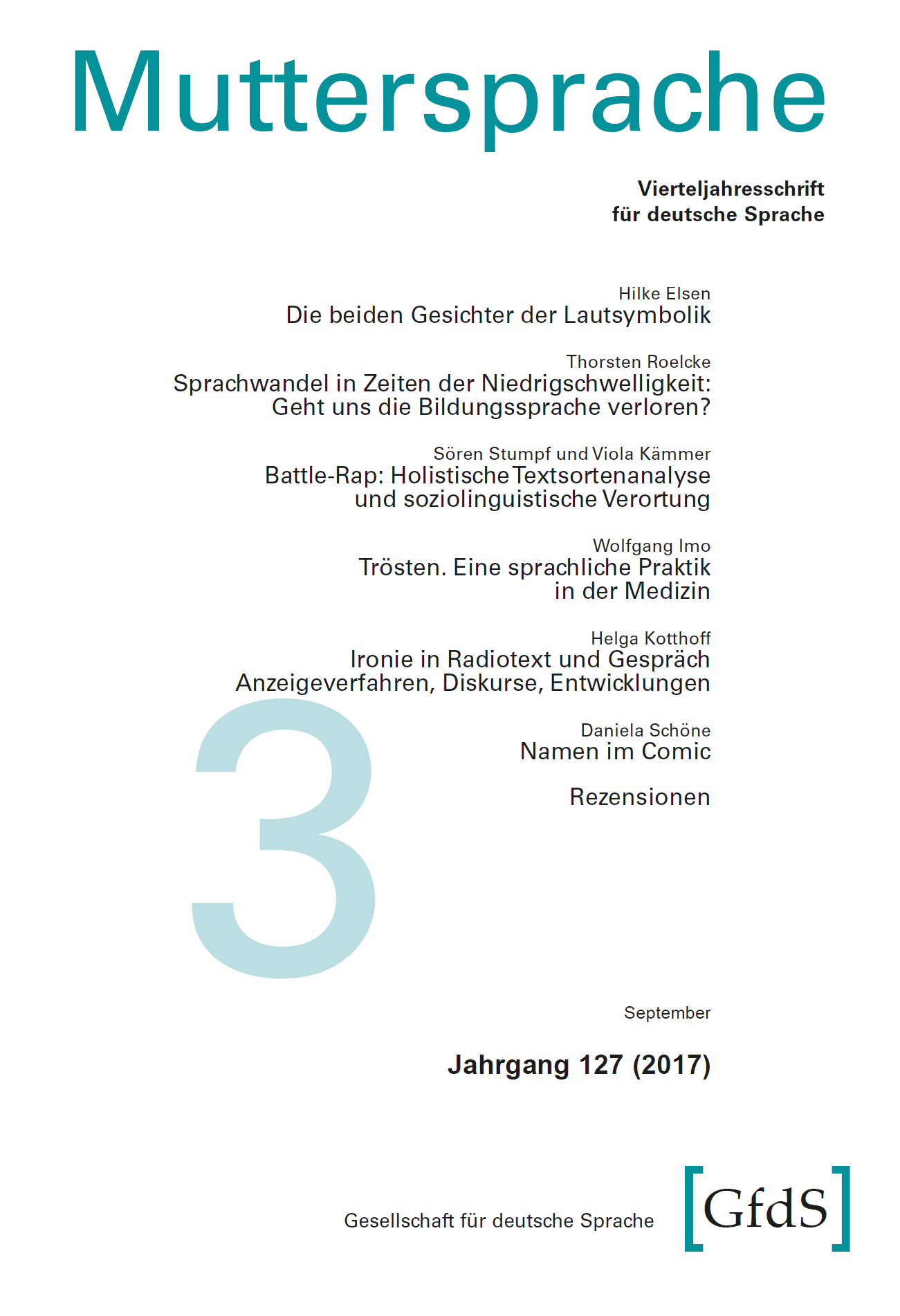Artikeldetails
Wolfgang Imo: Trösten. Eine sprachliche Praktik in der Medizin (MU)

Produkttyp: Beitrag (Zeitschrift)
Autor(in): Wolfgang Imo
Titel: Trösten. Eine sprachliche Praktik in der Medizin
Publikation in: Muttersprache, 127. Jahrgang, Heft 3
Seiten: 197–225 (29 Seiten)
Erschienen: 15.09.2017
Abstract: siehe unten

Preis: 4,90 € inkl. MwSt.
(Download)
Abstract
Gespräche zwischen Ärzt(inn)en und Patient(inn)en, in denen es um schwerwiegende Krankheiten wie Krebs geht, stellen an Ärztinnen und Ärzte sowie Patientinnen und Patienten hohe kommunikative Anforderungen. So müssen auf der einen Seite institutionelle und themengebundene Aufgaben (Diagnosemitteilung, Therapieplanung), auf der anderen Seite aber auch die Emotionen der Patient(inn)en bearbeitet werden. Daher ist es nicht verwunderlich, dass die sprachliche Praktik des Tröstens eine wichtige Rolle spielt. Anhand eines Korpus von 56 onkologischen Therapieplanungsgesprächen, aufgenommen am Städtischen Klinikum Karlsruhe, soll gezeigt werden, wie die ›Trostarbeit‹ von Ärzt(inn)en und Patient(inn)en interaktional abläuft, welche Trostinitiierungsstrategien zu beobachten sind, mit welchen Routinen und an welchen sequenziellen Positionen sprachlich getröstet wird.
Doctor-patient-interactions that deal with serious illnesses such as cancer are communicatively very demanding for both doctors and patients. On the one hand, institutional and topic-bound tasks such as the explanation of the cancer diagnosis or the planning of the proposed therapy have to be accomplished, and, on the other hand, doctors and patients have to cope with the patients’ emotions. It is not surprising, therefore, that the communicative practice of solacing plays an important role in those talks. On the basis of a corpus of 56 oncological therapy planning talks recorded at the Städtisches Klinikum Karlsruhe it will be shown how the ›solacing work‹ of doctors and patients is structured interactionally, what strategies for initiating solacing sequences can be observed and with which routines and at which sequential positions solace is given.